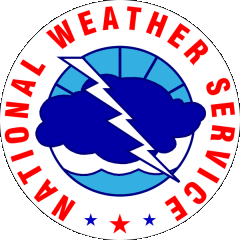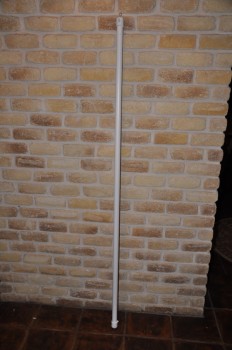With the start of Summer, June 1st marks the beginning of “Hurricane Season”. It’s been predicted to be a very active period. We hope a hurricane doesn’t strike our area, but we must be ready in case it does.Many newly licensed hams have joined the amateur radio ranks just in time to become useful communicators should an emergency caused by severe weather arise. There is always a need for trained emergency communications personnel, but this is especially true in the areas which are more likely to be impacted by a hurricane, those regions being the Atlantic and Gulf Coast areas. However, it takes more than just a license and a hand-held radio to make you a useful part of emergency communications. It also takes preparation, training and practice.
Preparation requires each communicator to develop a cache of supplies to help them in fulfilling their communications duties.
There are various websites you can rely on as basic lists in building your “go bag” of supplies. I realize that most of you are on limited budgets regarding the purchase of additional rigs or other related equipment, so improve on what you have with the addition of a better antenna system and upgraded power sources. Keep in mind that you won’t be able to “run home” to get something you’ve forgotten.
There are NO second chances with emergency communications during a hurricane.
Reminders –
If by choice or by wallet your only rig is an HT: The battery pack that came with your HT is NOT enough during a deployment. Make sure you have additional power in the form of extra batteries and a power supply. You should have enough “portable power” to last for at least 4 days of operation.
The “rubber duck” antenna that came with your HT won’t do much good during an emergency. In terms of Effective Radiated Power (ERP) a 5 watt HT with it’s standard rubber duck antenna at shoulder height actually radiates only 1.5 watts ERP. (The stock antenna that came with your HT is what’s known as a “negative gain antenna”) Clipping the same HT on your belt would attenuate the signal an additional 20 db, meaning the ERP would only be about 15 MILLIWATTS! This is why you need a “gain” antenna at a decent height for emergency communications deployment. You should have a 17 inch flexible whip antenna and at the very least a roll-up “J Pole” antenna with coax. If you are really serious, you’ll need an emergency VHF antenna. This is a very light weight, portable antenna that is packaged in a 48 inch tube yet deploys to a height of over 16 feet. It is easy to build. It exhibits gain. It can be used with an HT to greatly expand it’s range and can also be used with a mobile rig for indoor or outdoor use.
MAPS, MAPS, MAPS.
Always document what you do. Keep accurate notes and communications, marking times of each. This will help in reviewing later.
You’ll also need to refresh yourself on the basics of emergency communications. The better armed you are with information and the basic proper gear, the better you’ll be able to do your communications task.
Time to test and inspect all your equipment. Replace weak re-chargable batteries and check out all cables for wear or fraying. Make some test transmissions to see how well your equipment will “hit” the various local repeaters that are used during emergencies and put them in your radio’s memory bank. Perhaps it’s time to buy that deep-cycle marine battery as you might need it to power your mobile rig indoors during a power failure. (Don’t forget that emergency VHF antenna system as mentioned above)
Hopefully you are a member of some emergency communications group in your area. Time to attend meetings and on-air lessons in earnest. Ask questions no matter how trivial you think they are because others will probably benefit from the answers. If your group is smart, they’ll have a small drill or two. Keep your group updated on any new gear (radios, antennas, etc) which would make your deployment more valuable to your team.
Keep on your toes when a developing storm starts it’s march across the Atlantic. Follow the path and look at projected paths at: WEATHER UNDERGROUND website. It’s a good source of info during hurricane season.
PREPARE your family for the hurricane season. Train your family members and build a “home bag” so they won’t have to do without should severe weather occur in your area.
Make sure that if a hurricane is within 300 miles of your home that you keep all your vehicles’ gas tanks “topped off” and buy extra, extra batteries for any flashlights used by your family. At the same time, be sure to monitor your EmComm group’s repeater frequency for updates or possible “call outs”. Make sure that you also have “wide-range” repeater frequencies in you rig’s memory. If you have a General or above license, try to have a working, portable HF station which also includes an NVIS antenna system for reliable short-range HF communications.
Keep every battery charged and have all equipment gathered and ready.
Be an active member in your EmComm groups activities so you can all be “on the same page”. Hopefully, your emergency communications group has in place an honest, comprehensive emergency plan for it’s operators and has trained it’s members with something more than “table-top” drills. FIELD DAY IS NOT ENOUGH.

 South Central Texas Partners…
South Central Texas Partners… Title: 13th Annual Skywarn Recognition Day
Title: 13th Annual Skywarn Recognition Day

